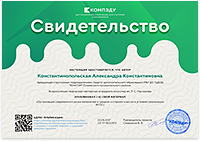Зимина Оксана Шавкатовна
учитель английского языка
1 квалификационной категории
МБОУ « Средняя общеобразовательная
школа имени М. И. Калинина»
МО «город Бугуруслан»
Предмет: Английский язык
Класс: 10
УМК: «Английский в фокусе» 10 класс, Ваулина Ю.Е., Эванс В., Дули Дж., Подоляко О.Е.– М.: Express Publishing: Просвещение, 2016.
Уровень обучения: базовый
Тема: Доводы «За и против»
Общее количество часов, отведенное на изучение данной темы - 2
Место урока в системе уроков по теме - 1
Цель урока:
Развивать навыки письменной речи, использовать необходимые лексические единицы и фразы при написании эссе.
Задачи урока:
формирование языковой компетенции;
развивать письменную речь, закрепить умение наблюдать, сравнивать, сопоставлять, анализировать, оценивать других, умение работать индивидуально и в коллективе;
воспитывать толерантность к иноязычной культуре, применять теоретические знания на практике, развивать познавательный интерес к предмету.
Планируемые результаты:
- описывать события/явления, передавать основное содержание, основную мысль прочитанного или услышанного, выражать свое отношение к прочитанному/услышанному;
- воспринимать на слух и полностью понимать речь учителя, одноклассников;
- читать справочные материалов; уметь оценивать полученную информацию, выражать свое мнение;
- писать эссе с элементами рассуждения на заданную проблему, составлять план, тезисы устного или письменного сообщения; кратко излагать результаты
- распознавать и употреблять в речи основные значения изученных лексических единиц (слов, словосочетаний, реплик-клише речевого этикета);
Техническое обеспечение урока: компьютер, медиапроектор
Ходурока:
Организационный момент
- Good morning, students. Sit down, please. How are you? Today we’ll practice our writing skills and we will learn how to write for and against essay.
Основная часть урока
Теоретическая часть
a)
- First of all you should learn the writing strategy of essay. Look at the theory box. Read this information. Now let’s check up and complete the plan of the essay (надоске – вывескаPLAN)
b)


 - How many parts are there in the essay? (учитель прикрепляет «части эссе» - чистые листы бумаги)
- How many parts are there in the essay? (учитель прикрепляет «части эссе» - чистые листы бумаги)
PLAN
- Name and write the parts of the essay (ученикиподписываютчасти)
introduction
PLAN
main body
conclusion
c)
- Let’s explain what each part is about
 What is the first part about? presenting topic
What is the first part about? presenting topic
 arguments for
arguments for
 What is the main body about? arguments against
What is the main body about? arguments against
 What is the conclusion about? giving your opinion
What is the conclusion about? giving your opinion
- Look at the definition of the essay parts and say how many paragraphs you should write in the essay?
Практическая часть
a)
- Well done. Now let’s practice our skills. Look at the screen (slide 2). You can see different parts of the essay “Should cars be banned from the city centres?” Read them and decide what part of the essay it is. (slides 3, 4, 5)
b)
Look at the ex 2 p 72. There is the whole text of the essay. Match the paragraphs with the headings.
Физминутка
- Now it’s time to have a rest(учитель включает спокойную музыку). Close your eyes, take deep breath, clear your minds. Imagine something good.
Закрепление изученного материала
a)
- Look at the ex 3 p 73. Each topic has supporting sentences. Find and read such ones in the text.
b)
- Match another topic sentences to their supporting sentences in ex 3 p 73
c)
- Read the topic sentences and give your own examples of appropriate supporting sentences (ex 5 p 73)
d)
- Look at the screen (slide 6). Read special words after me. Read them correctly. Translate them into Russian.
Firstly, To begin with, Secondly, Finally
Consequently, As a result, For this reason
Also, In addition, What is more, Not only…but…
However, Nevertheless, although, but, while, On the one hand…, On the other hand…
To sum up, To summarize, All in all, On the whole, All things considered
Which of them can we use
- to contrast
- to list
- to add
- to conclude
- to introduce results/examples
- Now look at the ex 6a p 73 and check
e)
- Choose the correct linkers. Ex 6b p 73. Which linking words did the author use in the text? Find and read them out.
f)
- Look at the ex 7a p 73. Which of these phrases can we use to express agreements? Which of these phrases can we use to express disagreements?
g)
- Read the sentences, express your agreements and disagreements (slide 7). Don’t forget to use phrases from ex 7
On the slide
There are many positive aspects to cycle to work.
Genetically modified crops have their disadvantages.
There are many advantages to animal conservation programmes.
The environmental protectionalprogrammes are very expensive.
Women are more concerned about fitness then men.
People can learn foreign languages only abroad.
Some young people have become addicted to online gaming.
The Internet helps teenagers to widen their knowledge.
We should be careful using the Internet.
Animals shouldn’t be kept in zoos.
Заключительная часть урока
Домашнее задание
- Well done! It’s time to explain your homework. Ex 1-3 p 33 in your workbooks. Match the topic sentences to their supporting sentences and write them. Fill in the gaps.
Подведениеитогов
- Let’s revise what we’ve learnt today.
How many paragraphs should we use in the essay?
What are they?
Is the topic of the lesson important for you?
Why?
Оценивание
The lesson is over. Good bye!





